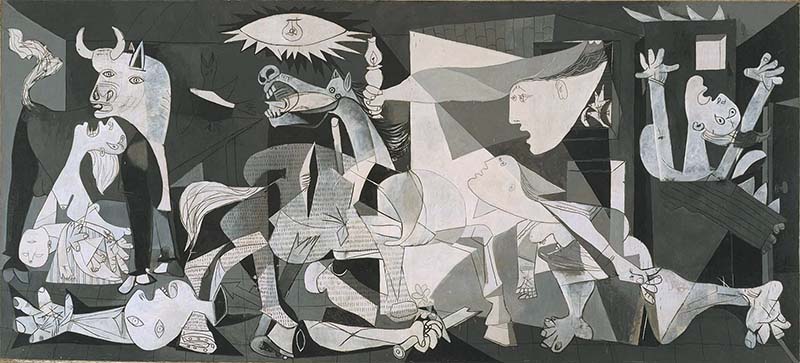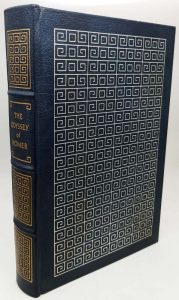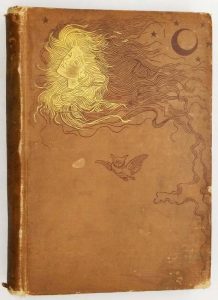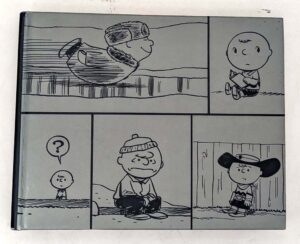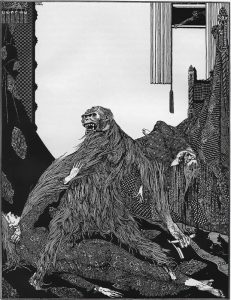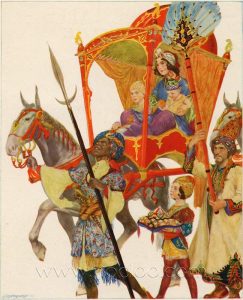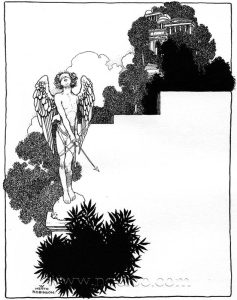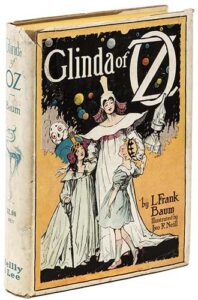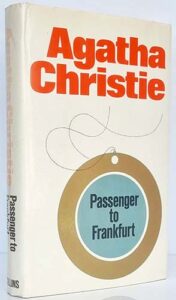Pablo Picasso [1930] - Baigneuse assise au bord de la mer [art, paintings]
Pablo Picasso [1930] - Etude pour un monument [art, paintings]
Pablo Picasso [1930] - Femme acrobate [L'acrobate] [art, paintings]
Pablo Picasso [1930] - Femme acrobate [art, paintings]
Pablo Picasso [1930] - Femme assise [Figure] [art, paintings]
Pablo Picasso [1930] - Figure (Tete de femme) [art, paintings]
Pablo Picasso [1930] - Figure [art, paintings]
Pablo Picasso [1930] - Fleur [art, paintings]
Pablo Picasso [1930] - L'acrobate [art, paintings]
Pablo Picasso [1930] - La crucifixion [art, paintings]
Pablo Picasso [1930] - La femme aux pigeons [art, paintings]
Pablo Picasso [1930] - Maternite [art, paintings]
Pablo Picasso [1930] - Nature morte [art, paintings]
Pablo Picasso [1930] - Seated Bather [art, paintings]
Pablo Picasso [1930] - Tete de femme [art, paintings]
Pablo Picasso [1930] - Tete sur fond rouge [art, paintings]
Pablo Picasso [1931] - Boccale e fruiteria [art, paintings]
Pablo Picasso [1931] - Buste de personnage [art, paintings]
Pablo Picasso [1931] - Femme lancant une pierre [art, paintings]
Pablo Picasso [1931] - Femme-fleur (Marie-Therese allongee) [art, paintings]
Pablo Picasso [1931] - Figures au bord de la mer [art, paintings]
Pablo Picasso [1931] - Figures au bord de mer2 [art, paintings]
Pablo Picasso [1931] - Grande nature morte au gueridon [art, paintings]
Pablo Picasso [1931] - Homme devoilant une femme (Suite Vollard L5) [art, paintings]
Pablo Picasso [1931] - L'atelier du sculpteur [art, paintings]
Pablo Picasso [1931] - La femme au jardin [art, paintings]
Pablo Picasso [1931] - La femme au stylet (Mort de Marat) [art, paintings]
Pablo Picasso [1931] - La femme aux cheveux jaunes [art, paintings]
Pablo Picasso [1931] - La lampe [art, paintings]
Pablo Picasso [1931] - Le baiser (Deux tetes) [art, paintings]
Pablo Picasso [1931] - Le fauteuil rouge [art, paintings]
Pablo Picasso [1931] - Le sculpteur1 [art, paintings]
Pablo Picasso [1931] - Le sculpteur2 [art, paintings]
Pablo Picasso [1931] - Maison a Juan Les Pins [art, paintings]
Pablo Picasso [1931] - Maison a Juan-les-Pins (La Villa Chene-Roc) [art, paintings]
Pablo Picasso [1931] - Maison [art, paintings]
Pablo Picasso [1931] - Marie-Therese - Face et profil [art, paintings]
Pablo Picasso [1931] - Pichet et coupe de fruits [art, paintings]
Pablo Picasso [1931] - Pichet, coupe de fruits et feuillage [art, paintings]
Pablo Picasso [1931] - Villa Chene-Roc [art, paintings]
Pablo Picasso [1931] - Ville Chene Roc - 13 [art, paintings]
Pablo Picasso [1931] - Visage sculptural [art, paintings]
Pablo Picasso [1932] - Baigneur avec un ballon de plage [art, paintings]
Pablo Picasso [1932] - Baigneuses au ballon [art, paintings]
Pablo Picasso [1932] - Baigneuses [art, paintings]
Pablo Picasso [1932] - Boisgeloup sous la pluie [art, paintings]
Pablo Picasso [1932] - Boisgeloup sous la pluie1 [art, paintings]
Pablo Picasso [1932] - Boisgeloup sous la pluie2 [art, paintings]
Pablo Picasso [1932] - Buste de femme de profil [art, paintings]
Pablo Picasso [1932] - Buste de femme [art, paintings]
Pablo Picasso [1932] - Compotier et mandoline [guitare] [art, paintings]
Pablo Picasso [1932] - Deux hirondelles [art, paintings]
Pablo Picasso [1932] - Femme assise dans un fauteuil rouge [art, paintings]
Pablo Picasso [1932] - Femme assise pres d'une fenetre (Marie-Therese) [art, paintings]
Pablo Picasso [1932] - Femme au fauteuil rouge [art, paintings]
Pablo Picasso [1932] - Femme avec une fleur [art, paintings]
Pablo Picasso [1932] - Femme couchee (Marie-Therese) [art, paintings]
Pablo Picasso [1932] - Femme couchee [Nu couche] [art, paintings]
Pablo Picasso [1932] - Femme dans un fauteuil [art, paintings]
Pablo Picasso [1932] - Femme endormie a l'oreiller rouge [art, paintings]
Pablo Picasso [1932] - Femme endormie aux cheveux blonds [art, paintings]
Pablo Picasso [1932] - Femme endormie [art, paintings]
Pablo Picasso [1932] - Femme etendue au soleil sur la plage II [art, paintings]
Pablo Picasso [1932] - Femme nue couchee [Nu couche] [art, paintings]
Pablo Picasso [1932] - Femme nue dans un fauteuil rouge [art, paintings]
Pablo Picasso [1932] - Femme tenant un livre (Marie-Therese Walter) [art, paintings]
Pablo Picasso [1932] - Femmes au bord de la mer [art, paintings]
Pablo Picasso [1932] - Femmes et enfants au bord de la mer (Le sauvetage) [art, paintings]
Pablo Picasso [1932] - Femmes jouant au ballon [art, paintings]
Pablo Picasso [1932] - Femmes jouant au bord de la mer [art, paintings]
Pablo Picasso [1932] - Jeune fille a la guitare [art, paintings]
Pablo Picasso [1932] - Jeune fille devant un miroir [art, paintings]
Pablo Picasso [1932] - Joueur de flute et nu couche [art, paintings]
Pablo Picasso [1932] - La ceinture jaune (Marie-Therese Walter) [art, paintings]
Pablo Picasso [1932] - La dormeuse au miroir (Marie -Therese Walter) [art, paintings]
Pablo Picasso [1932] - La lecture (Marie-Therese) [art, paintings]
Pablo Picasso [1932] - La lecture [art, paintings]
Pablo Picasso [1932] - La sieste [art, paintings]
Pablo Picasso [1932] - Le joueur de flute [art, paintings]
Pablo Picasso [1932] - Le miroir [art, paintings]
Pablo Picasso [1932] - Le repos (Marie-Therese Walter) [art, paintings]
Pablo Picasso [1932] - Le repos [art, paintings]
Pablo Picasso [1932] - Le repos1 [art, paintings]
Pablo Picasso [1932] - Le reve [art, paintings]
Pablo Picasso [1932] - Le sauvetage [Jeu de plage et sauvetage] [art, paintings]
Pablo Picasso [1932] - Le sauvetage [art, paintings]
Pablo Picasso [1932] - Le sauvetage1 [art, paintings]
Pablo Picasso [1932] - Le sommeil [art, paintings]
Pablo Picasso [1932] - Les amants [art, paintings]
Pablo Picasso [1932] - Nature morte aux tulipes [art, paintings]
Pablo Picasso [1932] - Nature morte- Buste, coupe et palette [art, paintings]
Pablo Picasso [1932] - Nu au collier [art, paintings]
Pablo Picasso [1932] - Nu au fauteuil noir [art, paintings]
Pablo Picasso [1932] - Nu couche (Marie-Therese) [art, paintings]
Pablo Picasso [1932] - Nu couche au collier [art, paintings]
Pablo Picasso [1932] - Nu couche aux fleurs [art, paintings]
Pablo Picasso [1932] - Nu couche sur un coussin rouge (Marie-Therese) [art, paintings]
Pablo Picasso [1932] - Nu couche [art, paintings]
Pablo Picasso [1932] - Nu couche1 [art, paintings]
Pablo Picasso [1932] - Nu couche3 [art, paintings]
Pablo Picasso [1932] - Nu couche4 [art, paintings]
Pablo Picasso [1932] - Portrait de Marie-Therese Walter [art, paintings]
Pablo Picasso [1932] - Sculpture d'une tete [Marie-Therese] [art, paintings]
Pablo Picasso [1932] - Tete de Marie-Therese [art, paintings]
Pablo Picasso [1932] - Trois femmes jouant au bord de la mer, cabines de bain [art, paintings]
Pablo Picasso [1933] - Composition [art, paintings]
Pablo Picasso [1933] - Corrida- la mort de la femme torero [art, paintings]
Pablo Picasso [1933] - Corrida- la mort du torero [art, paintings]
Pablo Picasso [1933] - Deux nus feminins et tete de femme [art, paintings]
Pablo Picasso [1933] - Femme au parasol etendue sur la plage [art, paintings]
Pablo Picasso [1933] - Femme endormie [art, paintings]
Pablo Picasso [1933] - Figure au bord de la mer [art, paintings]
Pablo Picasso [1933] - L'artiste et son modele [Le peintre et son modele] [art, paintings]
Pablo Picasso [1933] - Le balcon [art, paintings]
Pablo Picasso [1933] - Le cirque [art, paintings]
Pablo Picasso [1933] - Le repos du sculpteur [art, paintings]
Pablo Picasso [1933] - Le sauvetage [art, paintings]
Pablo Picasso [1933] - Le sculpteur et sa statue [art, paintings]
Pablo Picasso [1933] - Minotaure assis avec un poignard (Maquette pour la couverture de 'Minotaure') [art, paintings]
Pablo Picasso [1933] - Minotaure et nu (Le viol) [art, paintings]
Pablo Picasso [1933] - Minotaure [art, paintings]
Pablo Picasso [1933] - Nu accroupi et Minotaure [art, paintings]
Pablo Picasso [1933] - Nu assis [art, paintings]
Pablo Picasso [1933] - Nu couche [art, paintings]
Pablo Picasso [1933] - Nu dans un paysage [art, paintings]
Pablo Picasso [1933] - Nu sur la plage [art, paintings]
Pablo Picasso [1933] - Paysage [art, paintings]
Pablo Picasso [1933] - Paysage1 [art, paintings]
Pablo Picasso [1933] - Silene en compagnie dansante [art, paintings]
Pablo Picasso [1933] - Taureau et femme [art, paintings]
Pablo Picasso [1933] - Tete de femme [art, paintings]
Pablo Picasso [1934] - Au cabaret [art, paintings]
Pablo Picasso [1934] - Buste de femme [art, paintings]
Pablo Picasso [1934] - Cheval et taureau [art, paintings]
Pablo Picasso [1934] - Confidences [Deux femmes, carton pour une tapisserie] [art, paintings]
Pablo Picasso [1934] - course de taureaux [art, paintings]
Pablo Picasso [1934] - Courses de taureaux (Corrida) 1 [art, paintings]
Pablo Picasso [1934] - Courses de taureaux (Corrida) 2 [art, paintings]
Pablo Picasso [1934] - Courses de taureaux (Corrida) 3 [art, paintings]
Pablo Picasso [1934] - Courses de taureaux (Corrida) 4 [art, paintings]
Pablo Picasso [1934] - Courses de taureaux (Corrida) [art, paintings]
Pablo Picasso [1934] - Courses de taureaux (Corrida)1 [art, paintings]
Pablo Picasso [1934] - Deux personnages 1 [art, paintings]
Pablo Picasso [1934] - Deux personnages 2 [art, paintings]
Pablo Picasso [1934] - Deux personnages 3 [art, paintings]
Pablo Picasso [1934] - Femme a la bougie, combat entre le taureau et le cheval [art, paintings]
Pablo Picasso [1934] - Femme assise au chapeau rouge [art, paintings]
Pablo Picasso [1934] - Femme au beret [art, paintings]
Pablo Picasso [1934] - Femme au chapeau rouge (Marie-Therese) [art, paintings]
Pablo Picasso [1934] - Femme ecrivant (Marie-Therese Walter) [art, paintings]
Pablo Picasso [1934] - Femme ecrivant [art, paintings]
Pablo Picasso [1934] - Femme etendue sur une canape 1 [art, paintings]
Pablo Picasso [1934] - Femme etendue sur une canape [art, paintings]
Pablo Picasso [1934] - Femmes tenant un livre [art, paintings]
Pablo Picasso [1934] - Fille lisant a une table [art, paintings]
Pablo Picasso [1934] - L'atelier (Deux personnages) [art, paintings]
Pablo Picasso [1934] - La nageuse [art, paintings]
Pablo Picasso [1934] - Le peintre (Composition) [art, paintings]
Pablo Picasso [1934] - Les baigneuses [art, paintings]
Pablo Picasso [1934] - Mandoline et vase de fleurs [Nature morte] [art, paintings]
Pablo Picasso [1934] - Minotaure au javelot et femme otage [art, paintings]
Pablo Picasso [1934] - Minotaure aveugle conduit par une petite fille [art, paintings]
Pablo Picasso [1934] - Minotaure aveugle guide par une fillette dans la nuit IVb (Suite Vollard L92) [art, paintings]
Pablo Picasso [1934] - Minotaure aveugle guide par une petite fille [art, paintings]
Pablo Picasso [1934] - Nu au bouquet d'iris et au miroir [art, paintings]
Pablo Picasso [1934] - Nu dans un jardin1 [art, paintings]
Pablo Picasso [1934] - Nus [art, paintings]
Pablo Picasso [1934] - Profil a la fenetre [art, paintings]
Pablo Picasso [1934] - Taureau mourant [art, paintings]
Pablo Picasso [1934] - Tete de face (Portrait de Marie-Therese de face) [art, paintings]
Pablo Picasso [1935] - Buste de femme [art, paintings]
Pablo Picasso [1935] - Deux femmes (Jeune fille dessinant dans un interieur) [art, paintings]
Pablo Picasso [1935] - Femme au chapeau [art, paintings]
Pablo Picasso [1935] - Femme endormie [art, paintings]
Pablo Picasso [1935] - Femme lisant [art, paintings]
Pablo Picasso [1935] - Femme se coiffant [art, paintings]
Pablo Picasso [1935] - Femme, taureau et cheval [art, paintings]
Pablo Picasso [1935] - La minotauromachie VIIb [art, paintings]
Pablo Picasso [1935] - La muse [Jeune femme dessinant dans un interieur] [art, paintings]
Pablo Picasso [1935] - Le Minotaure [art, paintings]
Pablo Picasso [1935] - Maya a trois mois [art, paintings]
Pablo Picasso [1935] - Minotauromachie [art, paintings]
Pablo Picasso [1935] - Personnage serrure [art, paintings]
Pablo Picasso [1935] - Tete de femme (Olga Kokhlova) [art, paintings]
Pablo Picasso [1936] - Buste de Dora Maar 1 [art, paintings]
Pablo Picasso [1936] - Buste de Dora Maar 2 [art, paintings]
Pablo Picasso [1936] - Buste de Dora Maar [art, paintings]
Pablo Picasso [1936] - Buste de femme [art, paintings]
Pablo Picasso [1936] - Composition (Minotaure et femme) [art, paintings]
Pablo Picasso [1936] - Composition (Minotaure et femme)1 [art, paintings]
Pablo Picasso [1936] - Compotier de poires [art, paintings]
Pablo Picasso [1936] - Dora Maar de face [art, paintings]
Pablo Picasso [1936] - Dora Maar en forme d'oiseau [art, paintings]
Pablo Picasso [1936] - Dormeuse aux persiennes 1 [art, paintings]
Pablo Picasso [1936] - Faune devoilant une femme (Suite Vollard L97) [art, paintings]
Pablo Picasso [1936] - Faune, cheval et oiseau [art, paintings]
Pablo Picasso [1936] - Femme a la montre [art, paintings]
Pablo Picasso [1936] - Femme au buffet [art, paintings]
Pablo Picasso [1936] - Femme au chapeau [art, paintings]
Pablo Picasso [1936] - Femme au vase de fleurs [art, paintings]
Pablo Picasso [1936] - Femme aux bras leves [Tete de Dora Maar] [art, paintings]
Pablo Picasso [1936] - Femme dans un interieur [art, paintings]
Pablo Picasso [1936] - Femme devant une coiffeuse [art, paintings]
Pablo Picasso [1936] - Femme ecrivant une lettre [Portrait de femme] [art, paintings]
Pablo Picasso [1936] - Femme nue couchee [Nu etoile] [art, paintings]
Pablo Picasso [1936] - Femmes dans un interieur [art, paintings]
Pablo Picasso [1936] - Fille endormie sur une table1 [art, paintings]
Pablo Picasso [1936] - La depouille du Minotaure en costume d'Arlequin pour le 14 juillet par Romain Rolland [art, paintings]
Pablo Picasso [1936] - La depouille du Minotaure en costume d'Arlequin [art, paintings]
Pablo Picasso [1936] - La Puce [art, paintings]
Pablo Picasso [1936] - Le chapeau de paille au feuillage bleu 1 [art, paintings]
Pablo Picasso [1936] - Le crayon qui parle [art, paintings]
Pablo Picasso [1936] - Le sauvetage [art, paintings]
Pablo Picasso [1936] - Marie-Therese Walter au chapeau [art, paintings]
Pablo Picasso [1936] - Mere et enfant (Marie-Therese Walter emmitouffle Maya) [art, paintings]
Pablo Picasso [1936] - Minotaure blesse, cheval et personnages [art, paintings]
Pablo Picasso [1936] - Minotaure et jument morte devant une grotte face a une fille au voile [art, paintings]
Pablo Picasso [1936] - Minotaure mourant [Composition] [art, paintings]
Pablo Picasso [1936] - Minotaure tirant une charette [art, paintings]
Pablo Picasso [1936] - Nature morte 1 [art, paintings]
Pablo Picasso [1936] - Nature morte a la lampe [art, paintings]
Pablo Picasso [1936] - Nature morte au citron et aux oranges [art, paintings]
Pablo Picasso [1936] - Nature morte au compotier [art, paintings]
Pablo Picasso [1936] - Nature morte aux fruits [art, paintings]
Pablo Picasso [1936] - Nature morte [art, paintings]
Pablo Picasso [1936] - Nu devant un dressoir [art, paintings]
Pablo Picasso [1936] - Personnage au coquillage [Tete de femme] [art, paintings]
Pablo Picasso [1936] - Pigeon [art, paintings]
Pablo Picasso [1936] - Portrait de Dora Maar 1 [art, paintings]
Pablo Picasso [1936] - Portrait de Dora Maar [art, paintings]
Pablo Picasso [1936] - Portrait de femme (Femme lisant) [art, paintings]
Pablo Picasso [1936] - Portrait de femme de profil [art, paintings]
Pablo Picasso [1936] - Portrait de femme [art, paintings]
Pablo Picasso [1936] - Portrait de jeune fille 1 [art, paintings]
Pablo Picasso [1936] - Portrait de jeune fille [art, paintings]
Pablo Picasso [1936] - Portrait de Marie-Therese Walter [art, paintings]
Pablo Picasso [1936] - Tete de femme 1 [art, paintings]
Pablo Picasso [1936] - Tete de femme [art, paintings]
Pablo Picasso [1936] - Tete [art, paintings]
Pablo Picasso [1937] - Deux femmes nues sur la plage [art, paintings]
Pablo Picasso [1937] - Dormeuse [art, paintings]
Pablo Picasso [1937] - Femme accoudee [art, paintings]
Pablo Picasso [1937] - Femme accroupie 1 [art, paintings]
Pablo Picasso [1937] - Femme accroupie [art, paintings]
Pablo Picasso [1937] - Femme assise aux bras croises [art, paintings]
Pablo Picasso [1937] - Femme assise devant la fenetre (Marie-Therese) [art, paintings]
Pablo Picasso [1937] - Femme assise sur la plage [art, paintings]
Pablo Picasso [1937] - Femme au beret et a la robe a carreaux (Marie-Therese Walter) [art, paintings]
Pablo Picasso [1937] - Femme au beret et a la robe rouge [art, paintings]
Pablo Picasso [1937] - Femme au beret rouge [art, paintings]
Pablo Picasso [1937] - Femme au chapeau et col en fourrure [art, paintings]
Pablo Picasso [1937] - Figure assise [art, paintings]
Pablo Picasso [1937] - Grande baigneuse au livre1 [art, paintings]
Pablo Picasso [1937] - Guernica (etude] La femme qui pleure [art, paintings]
Pablo Picasso [1937] - Guernica [etude] I [art, paintings]
Pablo Picasso [1937] - Guernica [etude] II [art, paintings]
Pablo Picasso [1937] - Guernica [etude] III [art, paintings]
Pablo Picasso [1937] - Guernica [etude] [art, paintings]
Pablo Picasso [1937] - Guernica V [etude] [art, paintings]
Pablo Picasso [1937] - Guernica [art, paintings]
Pablo Picasso [1937] - Guernica1 [art, paintings]
Pablo Picasso [1937] - L'Arlesienne [art, paintings]
Pablo Picasso [1937] - La baignade [art, paintings]
Pablo Picasso [1937] - La femme au chat [art, paintings]
Pablo Picasso [1937] - La femme qui pleure 0 [art, paintings]
Pablo Picasso [1937] - La femme qui pleure 1 [art, paintings]
Pablo Picasso [1937] - La femme qui pleure 10 [art, paintings]
Pablo Picasso [1937] - La femme qui pleure 11 [art, paintings]
Pablo Picasso [1937] - La Femme qui pleure 12 [art, paintings]
Pablo Picasso [1937] - La femme qui pleure 13 [art, paintings]
Pablo Picasso [1937] - La femme qui pleure 14 [art, paintings]
Pablo Picasso [1937] - La femme qui pleure 2 [art, paintings]
Pablo Picasso [1937] - La femme qui pleure 3 [art, paintings]
Pablo Picasso [1937] - La femme qui pleure 4 avec mouchoir [art, paintings]
Pablo Picasso [1937] - La femme qui pleure 4 [art, paintings]
Pablo Picasso [1937] - La femme qui pleure 5 [art, paintings]
Pablo Picasso [1937] - La femme qui pleure 6 [art, paintings]
Pablo Picasso [1937] - La femme qui pleure 7 [art, paintings]
Pablo Picasso [1937] - La femme qui pleure 8 [art, paintings]
Pablo Picasso [1937] - La femme qui pleure 9 [art, paintings]
Pablo Picasso [1937] - La femme qui pleure au foulard 4 [art, paintings]
Pablo Picasso [1937] - La femme qui pleure au foulard [art, paintings]
Pablo Picasso [1937] - La femme qui pleure avec mouchoir III [art, paintings]
Pablo Picasso [1937] - La femme qui pleure avec mouchoir Il [art, paintings]
Pablo Picasso [1937] - La femme qui pleure I (III) [art, paintings]
Pablo Picasso [1937] - La femme qui pleure I (VI) [art, paintings]
Pablo Picasso [1937] - La femme qui pleure I [art, paintings]
Pablo Picasso [1937] - Les gateaux [art, paintings]
Pablo Picasso [1937] - Maisons et arbres [art, paintings]
Pablo Picasso [1937] - Maisons [art, paintings]
Pablo Picasso [1937] - Marie-Therese au beret bleu [Portrait de femme] [art, paintings]
Pablo Picasso [1937] - Minotaure [art, paintings]
Pablo Picasso [1937] - Nature morte 2 [art, paintings]
Pablo Picasso [1937] - Nature morte 3 [art, paintings]
Pablo Picasso [1937] - Nature morte a la bougie l [art, paintings]
Pablo Picasso [1937] - Nature morte a la bougie [art, paintings]
Pablo Picasso [1937] - Nature morte au pichet [art, paintings]
Pablo Picasso [1937] - Nature morte au pichet1 [art, paintings]
Pablo Picasso [1937] - Nature morte au verre [art, paintings]
Pablo Picasso [1937] - nature morte [art, paintings]
Pablo Picasso [1937] - Nature morte1 [art, paintings]
Pablo Picasso [1937] - Oiseau [art, paintings]
Pablo Picasso [1937] - Oiseaux dans une cage [art, paintings]
Pablo Picasso [1937] - Paysage de Juan-les-Pins [art, paintings]
Pablo Picasso [1937] - Poisson d'Avril (Dessin rebus no 8) [art, paintings]
Pablo Picasso [1937] - Portrait de Dora au chignon [art, paintings]
Pablo Picasso [1937] - Portrait de Dora Maar 4 [art, paintings]
Pablo Picasso [1937] - Portrait de Dora Maar 5 [art, paintings]
Pablo Picasso [1937] - Portrait de Dora Maar 6 [art, paintings]
Pablo Picasso [1937] - Portrait de Dora Maar 7 [art, paintings]
Pablo Picasso [1937] - Portrait de Dora Maar 8 [art, paintings]
Pablo Picasso [1937] - Portrait de Dora Maar 9 [art, paintings]
Pablo Picasso [1937] - Portrait de Dora Maar au collier [art, paintings]
Pablo Picasso [1937] - Portrait de Dora Maar [art, paintings]
Pablo Picasso [1937] - Portrait de Dora Maar1 [art, paintings]
Pablo Picasso [1937] - Portrait de femme a la guirlande [Marie-Therese couronne de fleurs] [art, paintings]
Pablo Picasso [1937] - Portrait de femme a la guirlande [art, paintings]
Pablo Picasso [1937] - Portrait de femme au beret 3 [art, paintings]
Pablo Picasso [1937] - Portrait de femme au beret [art, paintings]
Pablo Picasso [1937] - Portrait de femme au beret1 [art, paintings]
Pablo Picasso [1937] - Portrait de femme au beret2 [art, paintings]
Pablo Picasso [1937] - Portrait de femme au beret4 [art, paintings]
Pablo Picasso [1937] - Portrait de femme [art, paintings]
Pablo Picasso [1937] - Portrait de femme1 [art, paintings]
Pablo Picasso [1937] - Portrait de femme2 [art, paintings]
Pablo Picasso [1937] - Portrait de femme3 [art, paintings]
Pablo Picasso [1937] - Portrait de Lee Miller a l'Arlesienne [art, paintings]
Pablo Picasso [1937] - Portrait de Lee Miller [art, paintings]
Pablo Picasso [1937] - Portrait de Marie-Therese 3 [art, paintings]
Pablo Picasso [1937] - Portrait de Marie-Therese 4 [art, paintings]
Pablo Picasso [1937] - Portrait de Marie-Therese Walter a la guirlande [art, paintings]
Pablo Picasso [1937] - Portrait de Marie-Therese [art, paintings]
Pablo Picasso [1937] - Portrait de Nusch Eluard [art, paintings]
Pablo Picasso [1937] - Portrait de Nush Eluard [art, paintings]
Pablo Picasso [1937] - Taureau [art, paintings]
Pablo Picasso [1937] - Tete d'homme barbu [art, paintings]
Pablo Picasso [1937] - Tete de femme (Dora Maar) [art, paintings]
Pablo Picasso [1937] - Tete de femme (Marie-Therese Walter) [art, paintings]
Pablo Picasso [1937] - Tete de femme [art, paintings]
Pablo Picasso [1937] - Tete de minotaure [art, paintings]
Pablo Picasso [1937] - Tete devant la fenetre [art, paintings]
Pablo Picasso [1937] - Tete [art, paintings]
Pablo Picasso [1937] - Z La suppliante [art, paintings]
Pablo Picasso [1938] - Baigneuses a la cabine [art, paintings]
Pablo Picasso [1938] - Baigneuses au crabe [art, paintings]
Pablo Picasso [1938] - Bougie, palette, tete de Minotaure [art, paintings]
Pablo Picasso [1938] - Bougie, palette, tete de taureau rouge [art, paintings]
Pablo Picasso [1938] - Buste de femme (Dora Maar) 2 [art, paintings]
Pablo Picasso [1938] - Buste de femme (Dora Maar) 3 [art, paintings]
Pablo Picasso [1938] - Buste de femme (Dora Maar) 4 [art, paintings]
Pablo Picasso [1938] - Buste de femme (Dora Maar) [art, paintings]
Pablo Picasso [1938] - Buste de femme (Marie-Therese Walter) [art, paintings]
Pablo Picasso [1938] - Buste de femme a la chaise IX [art, paintings]
Pablo Picasso [1938] - Buste de femme accoudee [art, paintings]
Pablo Picasso [1938] - Buste de Femme assise (Dora) [art, paintings]
Pablo Picasso [1938] - Buste de femme au chapeau [art, paintings]
Pablo Picasso [1938] - Composition (Barque et personnages) [art, paintings]
Pablo Picasso [1938] - Deux faunes et nu [art, paintings]
Pablo Picasso [1938] - Deux femmes a l'ombrelle [art, paintings]
Pablo Picasso [1938] - Faune blesse et femme [art, paintings]
Pablo Picasso [1938] - Femme a la collerette [art, paintings]
Pablo Picasso [1938] - Femme accoudee [art, paintings]
Pablo Picasso [1938] - Femme assise (Dora Maar) [art, paintings]
Pablo Picasso [1938] - Femme assise (Nusch Eluard) [art, paintings]
Pablo Picasso [1938] - Femme assise 1 [art, paintings]
Pablo Picasso [1938] - Femme assise 2 [art, paintings]
Pablo Picasso [1938] - Femme assise 4 [art, paintings]
Pablo Picasso [1938] - Femme assise accoudee (Nusch Eluard) [art, paintings]
Pablo Picasso [1938] - Femme assise au chapeau de paille [art, paintings]
Pablo Picasso [1938] - Femme assise au jardin [art, paintings]
Pablo Picasso [1938] - Femme assise dans un fauteuil (Dora) 1 [art, paintings]
Pablo Picasso [1938] - Femme assise dans un fauteuil (Dora) [art, paintings]
Pablo Picasso [1938] - Femme assise [art, paintings]
Pablo Picasso [1938] - Femme au chapeau (Dora Maar) [art, paintings]
Pablo Picasso [1938] - Femme au chapeau bleu [art, paintings]
Pablo Picasso [1938] - Femme au chapeau de paille sur fond fleuri [art, paintings]
Pablo Picasso [1938] - Femme au coq [art, paintings]
Pablo Picasso [1938] - Femme aux mains jointes [art, paintings]
Pablo Picasso [1938] - Femme couchee (Dora Maar) [art, paintings]
Pablo Picasso [1938] - Femme couchee sur fond cachou [art, paintings]
Pablo Picasso [1938] - Femme dans un fauteuil [art, paintings]
Pablo Picasso [1938] - Femme et enfant (Marie-Therese et Maya) [art, paintings]
Pablo Picasso [1938] - Femmes a leur toilette [art, paintings]
Pablo Picasso [1938] - Figure feminine au chapeau, assise sur une chaise [art, paintings]
Pablo Picasso [1938] - Homme a la sucette 1 [art, paintings]
Pablo Picasso [1938] - Homme a la sucette [art, paintings]
Pablo Picasso [1938] - Homme au chapeau de paille et au cornet de glace 1 [art, paintings]
Pablo Picasso [1938] - Homme au cornet de glace 1 [art, paintings]
Pablo Picasso [1938] - Homme au cornet de glace 2 [art, paintings]
Pablo Picasso [1938] - Homme au cornet de glace 3 [art, paintings]
Pablo Picasso [1938] - Homme au gant rouge [art, paintings]
Pablo Picasso [1938] - Il neige [art, paintings]
Pablo Picasso [1938] - L'artiste devant sa toile [art, paintings]
Pablo Picasso [1938] - La coiffure [art, paintings]
Pablo Picasso [1938] - La fermiere [art, paintings]
Pablo Picasso [1938] - Le coq 2 [art, paintings]
Pablo Picasso [1938] - Le coq [art, paintings]
Pablo Picasso [1938] - Marin [art, paintings]
Pablo Picasso [1938] - Maya a deux ans et demi avec un bateau [art, paintings]
Pablo Picasso [1938] - Maya a la poupee et au cheval [art, paintings]
Pablo Picasso [1938] - Maya a la poupee1 [art, paintings]
Pablo Picasso [1938] - Maya au bateau 1 [art, paintings]
Pablo Picasso [1938] - Maya au bateau 2 [art, paintings]
Pablo Picasso [1938] - Maya en tablier rouge [art, paintings]
Pablo Picasso [1938] - Maya en tenue de marin [art, paintings]
Pablo Picasso [1938] - Nature morte a l'instrument de musique [art, paintings]
Pablo Picasso [1938] - Nature morte a la bougie, palette et tete de minotaure rouge [art, paintings]
Pablo Picasso [1938] - Nature morte a la palette et tete de taureau [art, paintings]
Pablo Picasso [1938] - Nature morte a la pomme [art, paintings]
Pablo Picasso [1938] - Nature morte a la tete de taureau noir [art, paintings]
Pablo Picasso [1938] - Nature morte au pichet [art, paintings]
Pablo Picasso [1938] - Nusch Eluard [art, paintings]
Pablo Picasso [1938] - Portrait de Dora Maar assise 1 [art, paintings]
Pablo Picasso [1938] - Portrait de Dora Maar assise 2 [art, paintings]
Pablo Picasso [1938] - Portrait de Dora Maar [art, paintings]
Pablo Picasso [1938] - Portrait de femme 1 [art, paintings]
Pablo Picasso [1938] - Portrait de femme 2 [art, paintings]
Pablo Picasso [1938] - Portrait de femme au chapeau de paille sur fond rose [art, paintings]
Pablo Picasso [1938] - Portrait de femme au chapeau [art, paintings]
Pablo Picasso [1938] - Portrait de femme au col vert (Marie-Therese Walter) [art, paintings]
Pablo Picasso [1938] - Portrait de femme [art, paintings]
Pablo Picasso [1938] - Portrait de Marie-Therese [art, paintings]
Pablo Picasso [1938] - Tete de femme - Profil gauche [art, paintings]
Pablo Picasso [1938] - Tete de femme 1 [art, paintings]
Pablo Picasso [1938] - Tete de femme au nez vert sur fond bleu-nuit (Dora) [art, paintings]
Pablo Picasso [1938] - Tete de jeune fille au poeme [art, paintings]
Pablo Picasso [1938] - Trois femmes [art, paintings]
Pablo Picasso [1939] - Buste de femme 1 [art, paintings]
Pablo Picasso [1939] - Buste de femme au chapeau (Dora Maar) [art, paintings]
Pablo Picasso [1939] - Buste de femme au chapeau 1 [art, paintings]
Pablo Picasso [1939] - Buste de femme au chapeau 2 [art, paintings]
Pablo Picasso [1939] - Buste de femme au chapeau raye [art, paintings]
Pablo Picasso [1939] - Buste de femme avec fichu [art, paintings]
Pablo Picasso [1939] - Buste de femme en costume violet [art, paintings]
Pablo Picasso [1939] - Buste de femme, les bras croises derriere la tete [art, paintings]
Pablo Picasso [1939] - Chevaux et personnage [art, paintings]
Pablo Picasso [1939] - Dora Maar assise [art, paintings]
Pablo Picasso [1939] - Femme accoudee 1 [art, paintings]
Pablo Picasso [1939] - Femme accoudee [art, paintings]
Pablo Picasso [1939] - Femme allongee sur un divan (Dora Maar) [art, paintings]
Pablo Picasso [1939] - Femme assise 1 [art, paintings]
Pablo Picasso [1939] - Femme assise 2 [art, paintings]
Pablo Picasso [1939] - Femme assise au chapeau 1 [art, paintings]
Pablo Picasso [1939] - Femme assise au chapeau 2 [art, paintings]
Pablo Picasso [1939] - Femme assise au chapeau 3 [art, paintings]
Pablo Picasso [1939] - Femme assise au chapeau 4 [art, paintings]
Pablo Picasso [1939] - Femme assise au chapeau 5 [art, paintings]
Pablo Picasso [1939] - Femme assise dans un fauteuil gris [art, paintings]
Pablo Picasso [1939] - Femme assise la main gauche sur la joue [art, paintings]
Pablo Picasso [1939] - Femme assise sur un fauteuil avec un chapeau rouge et bleu sur fond rose - Etoiles jaunes [art, paintings]
Pablo Picasso [1939] - Femme assise sur une chaise [art, paintings]
Pablo Picasso [1939] - Femme assise [art, paintings]
Pablo Picasso [1939] - Femme au chapeau bleu [art, paintings]
Pablo Picasso [1939] - Femme au chapeau vert [art, paintings]
Pablo Picasso [1939] - Femme au fauteuil et au chapeau [art, paintings]
Pablo Picasso [1939] - Femme couchee lisant (Marie-Therese) [art, paintings]
Pablo Picasso [1939] - Femme dans un fauteuil rouge [art, paintings]
Pablo Picasso [1939] - Femme debout la main droite derriere la tete [art, paintings]
Pablo Picasso [1939] - Femme lisant [art, paintings]
Pablo Picasso [1939] - Femme nue debout au peignoir [art, paintings]
Pablo Picasso [1939] - Femme se baignant [art, paintings]
Pablo Picasso [1939] - Fillette couronnee au bateau [art, paintings]
Pablo Picasso [1939] - Garcon au panier [art, paintings]
Pablo Picasso [1939] - Homme assis au tricot raye [art, paintings]
Pablo Picasso [1939] - Le chandail jaune (Dora) [art, paintings]
Pablo Picasso [1939] - Le chat a l'oiseau [art, paintings]
Pablo Picasso [1939] - Le chat saisissant un oiseau [art, paintings]
Pablo Picasso [1939] - Nature morte au crane de mouton [art, paintings]
Pablo Picasso [1939] - Nature morte au crane de taureau [art, paintings]
Pablo Picasso [1939] - Nature morte aux fruits [art, paintings]
Pablo Picasso [1939] - Nu assis sur bleu [art, paintings]
Pablo Picasso [1939] - Nu debout et femme assise 1 [art, paintings]
Pablo Picasso [1939] - Nu debout et femme assise 2 [art, paintings]
Pablo Picasso [1939] - Nu debout et femme assise 3 [art, paintings]
Pablo Picasso [1939] - Oiseau [art, paintings]
Pablo Picasso [1939] - Oiseaux [art, paintings]
Pablo Picasso [1939] - Peche de nuit a Antibes [art, paintings]
Pablo Picasso [1939] - Pichet aux fleurs [art, paintings]
Pablo Picasso [1939] - Portrait d'Emilie Marguerite Walter (Meme) [art, paintings]
Pablo Picasso [1939] - Portrait d'une jeune princesse, d'apres le Maitre de Moulins [art, paintings]
Pablo Picasso [1939] - Portrait de Dora Maar 1 [art, paintings]
Pablo Picasso [1939] - Portrait de Dora Maar 2 [art, paintings]
Pablo Picasso [1939] - Portrait de Dora Maar 3 [art, paintings]
Pablo Picasso [1939] - Portrait de Dora Maar 4 [art, paintings]
Pablo Picasso [1939] - Portrait de Dora Maar 5 [art, paintings]
Pablo Picasso [1939] - Portrait de Dora Maar 6 [art, paintings]
Pablo Picasso [1939] - Portrait de Dora Maar au chapeau [art, paintings]
Pablo Picasso [1939] - Portrait de Dora Maar aux yeux bleus [art, paintings]
Pablo Picasso [1939] - Portrait de Jaime Sabartes en Grand d'Espagne [art, paintings]
Pablo Picasso [1939] - Portrait de Marie-Therese Walter 1 [art, paintings]
Pablo Picasso [1939] - Portrait de Marie-Therese Walter [art, paintings]
Pablo Picasso [1939] - Portrait de Maya [art, paintings]
Pablo Picasso [1939] - Tete de femme (Dora Maar) [art, paintings]
Pablo Picasso [1939] - Tete de femme (Marie-Therese Walter) [art, paintings]
Pablo Picasso [1939] - Tete de femme 1 [art, paintings]
Pablo Picasso [1939] - Tete de femme 2 [art, paintings]
Pablo Picasso [1939] - Tete de femme 3 [art, paintings]
Pablo Picasso [1939] - Tete de femme 4 [art, paintings]
Pablo Picasso [1939] - Tete de femme 5 [art, paintings]
Pablo Picasso [1939] - Tete de femme au chapeau 1 [art, paintings]
Pablo Picasso [1939] - Tete de femme au chapeau bleu a ruban rouge [art, paintings]
Pablo Picasso [1939] - Tete de femme au chapeau mauve [art, paintings]
Pablo Picasso [1939] - Tete de femme au chapeau [art, paintings]
Pablo Picasso [1939] - Tete de femme aux cheveux blonds (Marie-Therese Walter) [art, paintings]
Pablo Picasso [1939] - Tete de femme aux deux profils [art, paintings]
Pablo Picasso [1939] - Tete de femme en pleurs [art, paintings]
Pablo Picasso [1939] - Tete de femme I (C) (Portrait de Dora Maar) [art, paintings]
Pablo Picasso [1939] - Tete de figure feminine (Dora Maar) [art, paintings]
